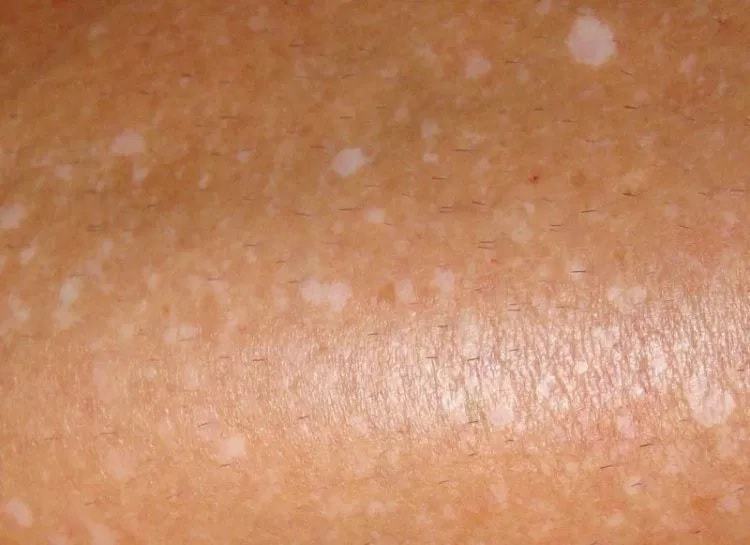Why do I have raised white spots on my legs? What are the causes of these small white spots on the legs? Discover more on the reasons behind white spots on the legs and thighs, causes of dry white spots, itchy spots, after tanning, and some of the basic remedies.
* As an Amazon Associate I earn from qualifying purchases.
What Causes White Spots On Skin
Causes of white spots on the legs include:
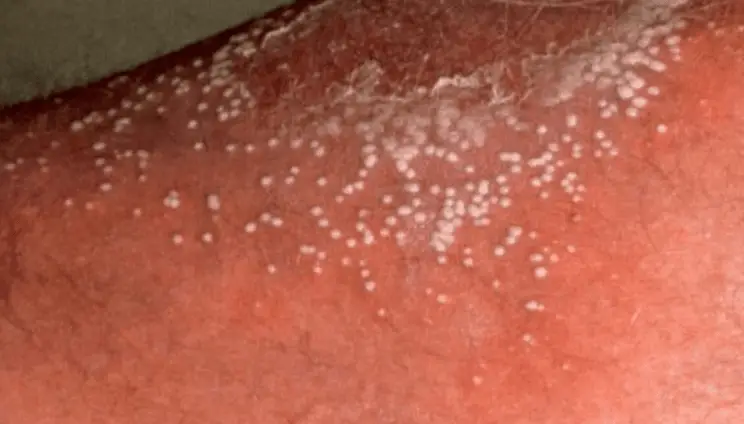
- Vitiligo
This is a skin disorder that results in loss of skin pigment due to the destruction of the melanocytes cells that are known in the production of skin melanin. The cells are activated with the penetration of sunlight into the outer layer of the skin where they are located.
When these cells are destroyed, skin pigment becomes less and in the process, an individual will experience the formation of white spots. These spots do grow in size and spread to the adjacent part of the skin on the body.
- Tinea versicolor
This is an infection of the skins that come and go. This skin condition occurs due to the invasion of overgrowth of yeast. The yeast develops due to the presence of moisture that occurs after sweating. It is important to find ways on how to combat sweating in order to minimize the growth of yeast.
- Idiopathic gestate hypomelanosis
The condition makes those parts of the body that are exposed to the sunlight to develop white spots. These spots due to this condition are mostly linked to the aging process and that is why most people who are in their 40s usually experience this.
White Dry Spots on Skin
The occurrences of white dry spots on legs are caused by numerous factors that range from allergies, infections and autoimmune disorders. There are other conditions of the skin such as eczema, seborrheic dermatitis, and psoriasis that can also result in dry spots on the skin.
Eczema is a skin condition that causes the appearance of skin inflammation and it is said to be genetic. The condition trigger skin irritation and itching with the formation of white spots on the skin around the legs, arms, chest, and face.
Another autoimmune disorder known as skin psoriasis makes the body to produce white blood cells that make the skin to be inflamed. The rapid production of the skin cells causes the skin to plaque up faster.
Itchy White Spots on Skin
This is a skin condition that is common during the winter season where the skin becomes dry due to environmental factors including cold, dry weather and forced-air heating. These might not be the only cause that results in the development of white spots on the skin that are itchy.
Here are some of the common causes of itchy white spots on legs apart from an environmental factor. The causes include:
- Tinea Versicolor
- Psoriasis
- Lichen Sclerosus
- Atopic Dermatitis
White Spots on Legs Circulation
The appearance of white spots on the lower part of the leg is usually associated with poor blood circulation. According to medical research done by Med Help Organization, the following are ways o how poor blood circulation on the lower quarter of the body can result in the formation of white spots.
- Venous pooling
This is a condition that occurs due to long-standing or sitting making the deep veins get blocked thus hindering the transportation of deoxygenated blood back to the heart for purification. In the process, it will trigger the formation of white spots on the lower and upper parts of the thighs.
- Bier spots
They are usually presented as small white macules on the skin of the legs and forearms. According to the research done by the Indian Dermatology Online Journal, these macules are common among young adults. It is recommended to consult a dermatologist in case the macules continue to grow and spread to the adjacent regions.
White Spots on Thighs
The formation of spots on the thighs can be embarrassing although in most cases they are covered. There are several factors that are associated with making the appearance of white spots on dark-skinned people or black spots on the thighs of light-skinned people.
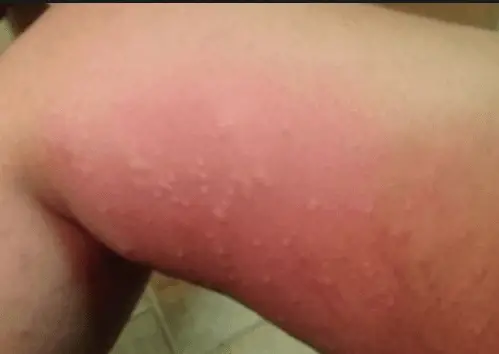
Some of the common causes include the following:
- Vitiligo
- Pityriasis Alba
- Tinea versicolor
- Leprosy
- Skin psoriasis
- Idiopathic Guttate
Small White Spots on Skin Pictures
The appearance of numerous small white spots on the skin can raise a lot of concern. It is important to observe how they look like and understand some of the underlying causes before buying drugs over the counter to help combat the condition.
The pictures in the article show how these tiny spots or patches look like and the following are some of the causes of these white spots on the body:
- Tinea Versicolor
The condition result due to the appearance of fungal infection on the skin resulting in the formation of small white patches on the skin especially on the back and folds of legs where there is the presence of moisture due to excessive sweating. Yeast thrives well where the skin is moist.
- Lichen Sclerosus
This is a rare type of skin condition that affects women at menopause causing the loss of skin pigment. It majorly appears on the genital areas and also on the lower part of the legs. The condition is characterized by the formation of white spots that are smooth, white patches and cracked or sore skin surface.
- Eczema
The condition of the skin is marked by being red, itchy and dry. The medical term for the condition is atopic dermatitis. The white spots and patches usually appear within the red rashes. The condition usually affects kids mostly but sometimes they can continue to adulthood.
- Pityriasis alba
This is a skin disorder that results in pale pink or red, scaly patches to form on the skin. Once the disorder has been curbed, the skin around the affected area becomes patched and discolored. Most research associates this type of skin problem with eczema or an overactive immune response.
White Spots On Arms Vitamin Deficiency
The skin pigment occurs due to the presence of melanin in the skin that is produced by melanocyte cells. This protein component also gives the hair its black color. The level of skin pigment depends on the amount of sunlight a person is exposed to, genetics, and also the environmental conditions.
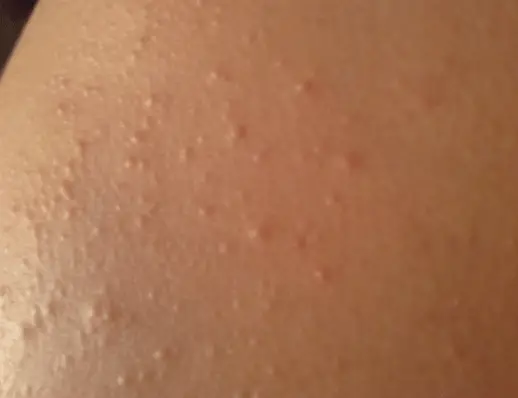
The following are a number of vitamin deficiencies that can lead to the appearance of white patches or spots on the skin of the arms and legs. These vitamins include:
- Vitamin C
This type of vitamin plays a vital role in skin pigmentation and also in the formation of nails, blood vessels, hair, connective tissue, bones and a number of other tissues. Lack of this vitamin in the diet could result in the appearance of pale skin color due to scurvy.
Apart from skin color changes, the patient is likely to experience damaged bones, tooth loss, thinning of the blood vessel and skin damage. It is therefore recommended that people with the condition to make use of fruits and vegetable in order to get ascorbic acid that is rich in vitamin C.
- A LEADING VITAMIN FOR IMMUNE SUPPORT Vitamin C is one of the leading nutritional vitamins for immune support; (1) People reach for Vitamin C by Nature’s Bounty to help them maintain a healthy immune system all year long (1)
- ANTIOXIDANT SUPPORT Vitamin C is one of the best antioxidants for fighting free radicals; Free radicals can cause oxidative stress that may lead to premature aging of the cells (1)
- NOURISHES THE IMMUNE SYSTEM Nature’s Bounty Vitamin C Tablets play an important role in the functioning of white blood cells which are vital components of the immune system (1)
- QUALITY IS OUR PRIORITY Nature’s Bounty is committed to the safety of all of our supplements. Our Vitamin C Tablets are gluten-free and contain no preservatives; no sodium; or artificial colors or sweeteners
- FROM THE TRUSTED WELLNESS EXPERTS Nature’s Bounty Vitamin C supplements are a product of 50 years of dedication to quality and scientific research to make vitamins and nutritional supplements of unrivaled excellence
* As an Amazon Associate I earn from qualifying purchases.
- Vitamin B-9
The presence of vitamin B-9 in the diet plays an important role in enhancing metabolism and the production of sufficient energy for the body. Under consumption of foods that contain vitamin b-9 could result in folate-deficiency anemia which makes the skin color to change to pale from its original color.
The condition can also cause a decrease in skin pigmentation, fatigue, and headaches due to a low supply of oxygen to the required tissues since fewer red blood cells are produced. To restore back the skin color, the patient is supposed to take leafy greens, beans, and fortified juices.
- 240 Capsules of Folic Acid In Each Bottle
- 1,000 MCG of Folic Acid Per Capsule
- High Quality Folic Acid
- Non-GMO, Soy Free, And Gluten Free
- Made in a GMP Compliant, FDA Registered Facility
* As an Amazon Associate I earn from qualifying purchases.
- Vitamin B-12
Consumption of vitamin B-12 helps in the production of hemoglobin and energy from the nutrients. Insufficiency of vitamin B-12 can lead to pernicious anemia that also causes fatigue, fever, numbness and pale skin color.
It is recommended to consume more vitamin B-12 supplements to avoid the occurrence of anemia and loss of skin pigment. Some of the foods that have a high content of vitamin B-12 include; eggs and meats.
- Cellular Energy Production and Healthy Nervous System Support supplement : Contains one 100 count bottle of Natrol Vitamin B-12 5000mcg Fast Dissolve Tablets for a 200-day supply
- Dietary supplement with high-potency Vitamin B-12 support, supports a healthy nervous system, and essential for healthy red blood cell formation
- Each Natrol Vitamin B-12 tablet offers a fast-dissolve formula with a delicious strawberry flavor.
- Adults, take one Natrol Vitamin B-12 fast dissolve tablet daily. No water necessary.
- These statements have not been evaluated by the Food and Drug Administration; this product is not intended to diagnose, treat, cure, or prevent any disease
* As an Amazon Associate I earn from qualifying purchases.
- Vitamin D
Insufficiencies in the production of Melanocytes cells on the skin surface can result in loss of skin pigmentation. This condition happens since these cells form a site for the synthesis of vitamin D once a person is exposed to the sunlight.
Sufficient sunlight helps to fight the deficiency of vitamin D since the level of skin pigment is determined by the amount of sunlight an individual is exposed to. It is also recommended that light-skinned people should be exposed to less sunlight as compared to dark-skinned people.
- An essential Vitamin: Vitamin D is an essential nutrient for healthy bones, teeth, muscle function, and immune system support. The mayo Clinic estimates that 25%-50% of the general population may be Vitamin D deficient.
- Sunshine In a Bottle: The Vitamin D Council recommends daily vitamin D supplementation for most adults to achieve and maintain optimal levels, regardless of weather or season.* NatureWise Vitamin D3 is all natural, non-GMO, and gluten free with no artificial additives, fillers or binders.
- Pure & natural: These Vitamin D3 immune support and bone health supplements are gluten-free and non-GMO. Third party tested for purity and potency. Packaging may vary due to high demand, same great product and ingredients.
- Uncompromising Quality: All NatureWise supplements are Manufactured in USA-based facilities that comply to the strictest cGMP standards and undergo rigorous testing by third party labs to ensure the highest quality and purity.
- Directions: It's normal for softgels to stick together and clump during warm weather conditions. This does NOT affect the quality or efficacy of the product. To release the clumps, give your bottle a good shake or knock it against the counter.
* As an Amazon Associate I earn from qualifying purchases.
White Spots on Legs That Come and Go
Excessive exposure to the sunlight will result in the development of white spots that come and stay instead of those types of white spots that come and go. The condition can affect both men and women especially those in dry areas.
The appearance of white spots on the skin is due to sun damage. The presence of the strong UV rays of the sun makes the cells that produce melanin to get destroyed and in the process, it becomes malfunctioned.
The research shows that the pigment in the skin begins to clump together and in the process, an individual will develop either dark spots or white spots.
White Mole on Leg
Do you have a crusty mole? Moles have raised bumps on the surface of the skin that occurs when the melanocytes cells appear to have grown in clusters. Moles changes in size, color, and appearance.
The research shows that there are several types of moles such as halo naevi, dysplastic or atypical naevi, blue naevi, dermal melanocytic naevi, and junctional melanocytic naevi. Depending on the underlying cause of the mole, each type of mole has its own color and appearance.
The following are signs that show if the moles are cancerous:
- Moles that keep on changing color from dark, brown or inconsistent in colors.
- Evolving moles or moles that keep on changing in size
- Blurred Border
- Moles that hurt or painful moles
- Asymmetry
Idiopathic Guttate Hypomelanosis
This is a condition that is marked by the formation of numerous, small, white macules on the surface of the skin. The condition is quite common among all people regardless of age and sex but the research shows that it is common among people with dark skin.
The skin disease causes the skin to produce a low level of melanin and in the process, an individual may start experiencing the formation of white spots on the legs or forearm.
According to the research, the exact causes of the skin infection remain unknown but the sunlight rays are linked to the appearance of these white macules on the skin.
Some of the infections on the skin of the patient can create a lot of discomforts and in the process; the patient may be required to seek medical advice from a professional and treatment.
White Spots on Legs after Tanning
The appearance of white spots on the skin is a common skin condition that usually happens during the summer seasons among many teenagers and adults. These spots happen in the areas that are exposed to the UV rays from the sun.
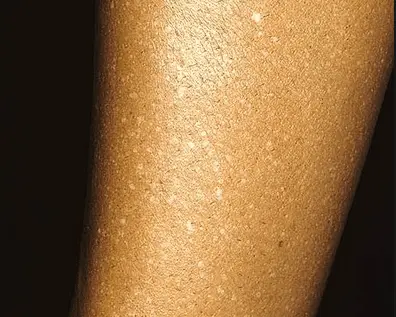
The spots occur due to the infection of the skin and in the process of tanning, the skin loses its pigment since the cells meant for producing melanin are blocked from doing so.
Here are some of the factors that lead to the formation of white spots on the skin of the legs. These causes include:
- Tinea Versicolor
This is a skin problem that is common to people who live in humid areas such that they tend to sweat more resulting in a high risk of getting a skin infection. The moisture due to sweat on the skin can result in excessive growth of fungus that causes the development of white spots.
- Tanning Beds
The use of tanning beds that are exposed to or are subjected to artificial UV light in order to give it a bronze appearance, there are high chances of getting the skin infection that causes the appearance of white spots on the skin.
- Vitiligo
Prolonged exposure to excessive sunlight or the appearance of sunburn can result in the development of vitiligo. The condition makes the skin cells to be unable to produce adequate melanin that gives the skin its pigment.
- Medications
There are certain drugs that are prescribed to the patient and in the process as a side effect; the skin of the patient becomes more sensitive when they are exposed to the sunlight resulting in the development of white spots.
- Idiopathic guttate hypomelanosis
According to the research, it is known to be a genetic disorder that causes the loss of skin pigment and in the process, an individual will develop white patches on the skin.
- Pressure points
This skin condition happens to those patients in the hospital who are prone to using tanning beds. The patient inside the tanning bed in a certain position causes a decrease in circulation to a number of pressure points such as the legs and shoulders. These parts of the body will eventually develop white spots.
Other common causes include:
- Low levels of melanin in the leg skin
- Overactive sweat glands
- Presence of scars on the leg
Home Remedies to Get Rid of White Spots after Tanning Skin
These remedies include:
- The use of medicated creams or antifungal creams and ointments helps to get rid of white spots on the legs that are caused by a fungal infection.
- Observing and following a high level of hygiene while tanning inhibits the appearance of white spots.
- The use of reputable and quality skin creams and tanning lotions is important
- Drink plenty of water, juices and herbals tea makes the body remain or stay hydrated for a long period of time.
- Eat a proper balanced diet to keep the skin healthy and protected from the skin infections
- Avoid too much exposure to UV rays and tanning
White Spots on Legs Home Remedies
These home remedies include:
- Gingko Biloba
This is a Chinese natural remedy that is rich in polyphenol which is known to lower the oxidative stress and inflammation that result in white spots on the skin. According to some research, this oxidative stress and inflammation can stimulate autoimmune problems.
Note: Pregnant women, a patient suffering from diabetes, children, and people with injury due to surgery are not allowed to take drugs made of Ginkgo Biloba.
- GINKGO BILOBA SUPPLEMENT: Nature's Bounty's Ginkgo Biloba 120 mg standardized extract may help maintain healthy circulation & may help support mental alertness & healthy brain function, perfect for occasional mild memory problems associated with aging
- MENTAL ALERTNESS & MEMORY: Used in China in the 15th century for its healthy properties, Ginkgo Biloba may help support healthy brain function, mental alertness and support memory, especially occasional mild memory problems associated with aging.Sodium free
- MINERALS FOR MOOD: Nature’s Bounty Calcium-Magnesium and can support a calm, relaxed mood
- NATURE'S BOUNTY FOR A HEALTHY LIFE: At Nature's Bounty, we want to help you maintain wellness at every stage of life & carry a range of vitamins & supplements including prenatal vitamins, mood support, joint support & supplements for healthy aging
- GUARANTEED QUALITY: Nature's Bounty nutritional supplements meet high quality standards Try them if you've enjoyed supplements from Garden of Life, Vitafusion, Rainbow Light, Centrum, Alive, Solgar, Nordic Naturals, or Nature Made
* As an Amazon Associate I earn from qualifying purchases.
- Use Radish Seeds
Obtain a powder made from dry seeds and mix them with some amount of vinegar. Mix them thoroughly until a paste is formed then apply it to the white patches on the skin. Allow the paste to dry on the skin then rinse with clean water. Repeat the process until there is a noticeable change in skin appearance.
- Daikon Radish Seed Powder (4 oz, ZIN: 516495)
* As an Amazon Associate I earn from qualifying purchases.
- A mixture of Honey, Olive Oil, And Beeswax
Some white patches on the skin or white spots on the legs could be due to yeast infections. Some of the common disease on the skin caused by fungi infection is tinea versicolor or pityriasis versicolor. People who live in subtropical or tropical locations are commonly affected.
The presence of honey in the blend is known to have antimicrobial that help to halt yeast infection. The olive oil and beeswax help to make the skin moisturized and have a blossom complexion.
- Use of Basil
The basil juice contains antifungal properties that help to get rid of those bacteria or fungi that cause loss of skin pigment. The basil leaves are used in Ayurvedic remedy for the treatment of white spots on the skin known as leucoderma.
- Drink Apple Cider Vinegar
Fermented apple cider vinegar helps to the growth of excessive bacteria in the gut that in turn would result in autoimmune diseases that cause the appearance of white spots on legs. The intake of apple cider vinegar also helps to facilitate proper digestion of some foods.
- Use of Neem Leaves
It has antifungal and antibacterial properties that make it work against the appearance of white spots on the skin that are caused by fungi infections. According to research, the use of creams that are made from Neem leaves works more effectively in getting rid of black spots on the face or white spots on the skin of the legs.
* As an Amazon Associate I earn from qualifying purchases.
- Use Turmeric with Mustard Oil
Turmeric is said to have antibacterial and disinfectant properties that help to get rid of leucoderma or vitiligo from the skin apart from healing it. Mustard oils work in moisturizing the skin and also in fighting the fungi and bacteria causing the appearance of white patches on the skin.
- Babchi
It contains some proactive elements that help to fight against loss of skin pigment and it is mainly used in Ayurvedic treatments. According to the experts, it has antipsoriatic properties which are essential in treating skin psoriasis.
- ✔ABOUT: Pure & Natural Undiluted Oil Organic Standard.
- ✔PROPERTIES: Pale yellow liquid with herbaceous, round, green aroma, smelling of the woods and slightly minty.
- ✔EXTRACTION METHOD: Babchi oil is cold pressed oil from the seed of Eclipta prostrata.
- ✔USES: Babchi oil can be diffused to create an uplifting and energizing atmosphere, or it can be blended with carrier oils for massage.
- ✔ STORAGE AND PACKAGING: High Quality Amber Glass Bottle.
* As an Amazon Associate I earn from qualifying purchases.
- Coconut Oil
The ingredients of coconut oil help in soothing the skin and getting off any skin inflammations. The content of coconut oils helps in facilitating skin repigmentation. It also has antifungal and antibacterial properties that help in the development of new cells that promote skin pigmentation.
- Radish Seeds
Obtain a paste of radish seeds and mixed it with vinegar then apply to the affected region on the skin. The content of the paste helps to fight those bacteria or microorganism that causes vitiligo or leukoderma.
FURTHER REFERENCES AND SOURCES
- How to Get Rid of White Patches on Skin, Vitiligo: http://www.top10homeremedies.com/how-to/how-to-get-rid-of-white-patches-on-skin.html/2
- Home Remedies to Get Rid of White Spots after Tanning Skin: http://www.simple-remedies.com/home-remedies/skin-diseases/white-spots-after-tanning-skin.html
- Idiopathic Guttate Hypomelanosis: http://www.aocd.org/?page=IdiopathicGuttateH
- Common Moles, Dysplastic Nevi, and Risk of Melanoma: https://www.cancer.gov/types/skin/moles-fact-sheet
- Vitamin Deficiency & Skin Pigmentation Loss: http://www.livestrong.com/article/475487-vitamin-deficiency-skin-pigmentation-loss/
- What’s Causing Spots on My Skin and How Can I Treat Them? http://www.healthline.com/health/skin-disorders/white-spots-on-skin#overview1

